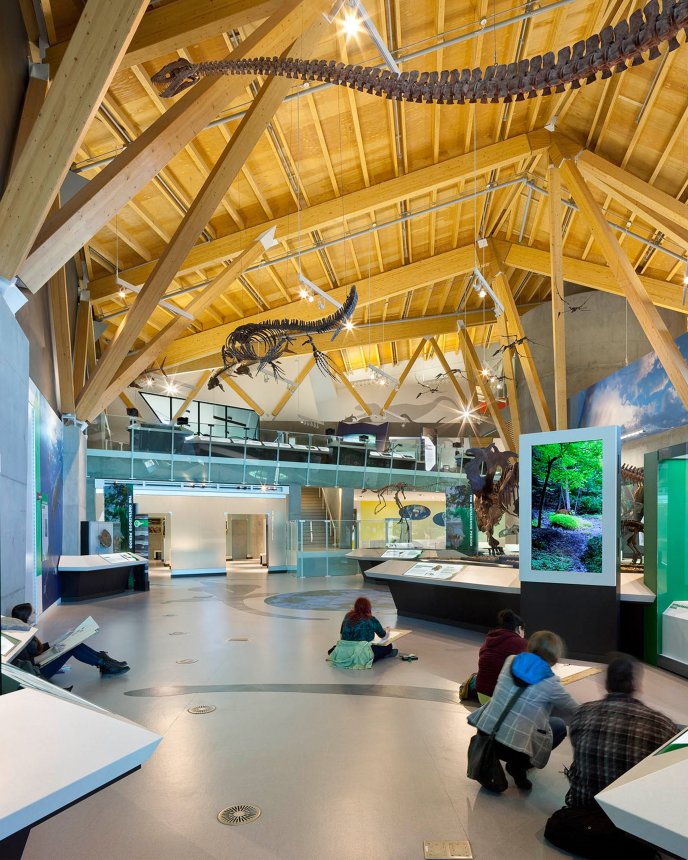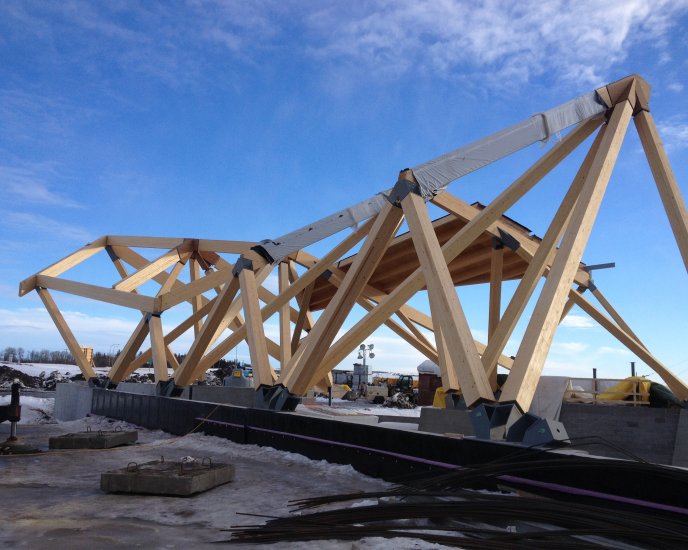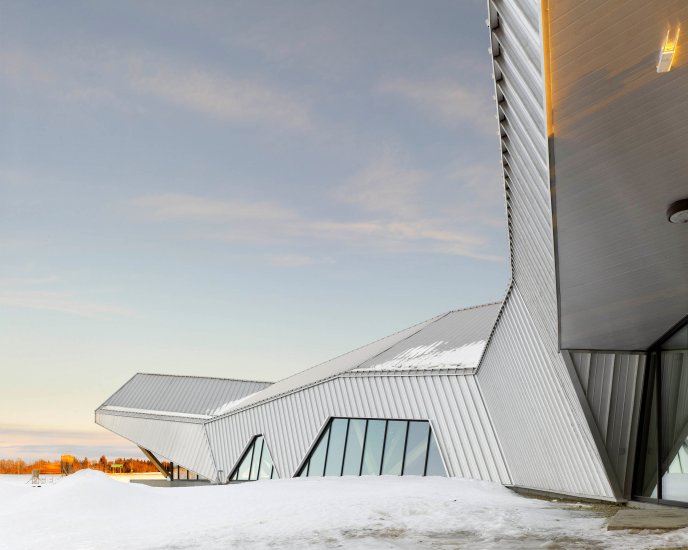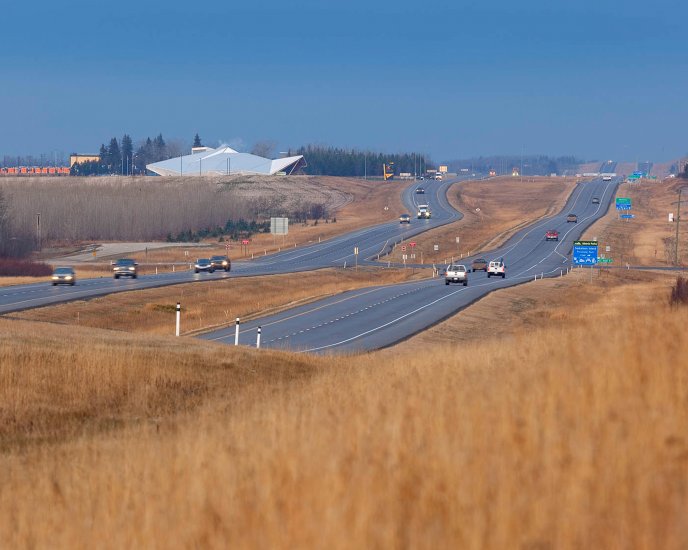Date of Completion: 2015
OAA Awards 2017 Design Excellence Finalist
The Philip J. Currie Dinosaur Museum is an internationally significant centre of paleontology in fossil-rich northern Alberta. Visitors move through a sequence of spaces and experiences that form an architectural narrative that parallels the fascinating story of the Pipestone Creek dinosaur bone bed.

Photo Credit: Tom Arban Photography
The design philosophy of the building embodies multiple stories: the stories of the giant creatures that once roamed here, the Earth that came before us and the tireless work of Al Lakusta, Philip Currie and all the scientists, educators, and philanthropists who believe in the mission of the Philip J. Currie Museum and its role in Southern Alberta. While the extensive use of wood, the barn like post and beam structure, and the raw aluminium cladding are references to the Peace River Country’s history of agriculture and forestry.

Photo Credit: Tom Arban Photography
A new technology was developed to construct the wood structure, in particular, the nodes where up to eight large beams meet at a single point. The architects, engineers, and fabricators collaborated during the design process, working from the same 3D models and bypassing the conventional drawing process.

Photo Credit: Tom Arban Photography
The form of the roof is both ambiguously organic and prehistoric, while simultaneously referencing the rolling prairie landscape and the jagged white horizon formed by the Rocky Mountains to the southwest, as if the land itself were lifted up to reveal the secrets buried in the earth below. While two massive retaining walls push back the earth to expose the Museum floor four metres below to which visitors descend to see the assembled skeletons. The building then sits naturally on its site, surrounded by actively farmed land.
Energy use is minimized by various strategies including displacement ventilation, a highly insulated building envelope system that eliminates cold bridging a strategic use of glazing, and LED lighting. The most striking green feature, however, is the extensive use of wood, much of it sourced from local mountain pine beetle killed forests.

Photo Credit: Tom Arban Photography
The Dinosaur Museum provides the necessary infrastructure to support an emerging industry of fossil centred tourism and paleontological research in the north. With the new museum and its laboratory facilities, the artifacts and scientific research can stay in the region to enrich the economy and culture of the north.